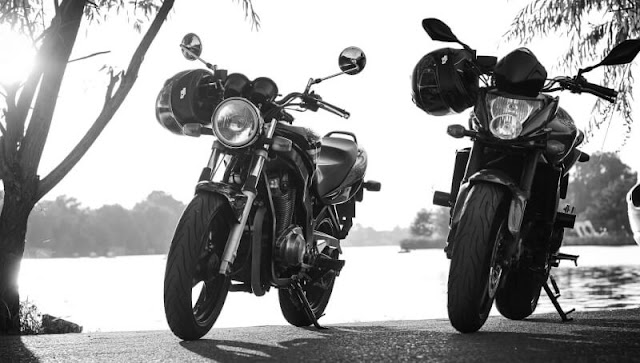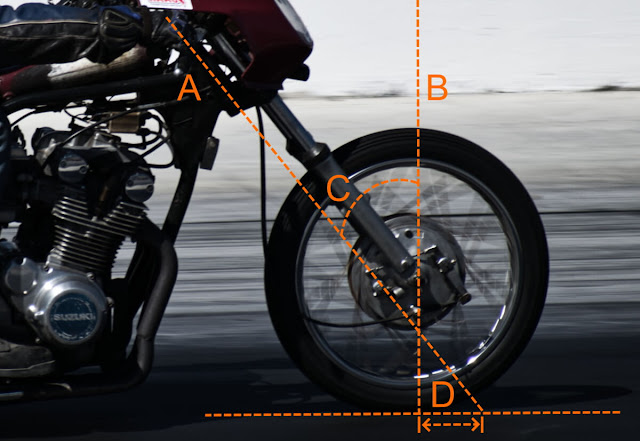
Rider Safety: Tourers vs Cruisers, Street & Sport Bikes

A reputed motorcycle dealer recently told me, “Safety isn’t nearly as important a consideration for most folks getting a bike as it ought to be. Looks, color, exhaust note, horsepower -- they sell wheels. Safety is often just an afterthought.” So if you’re wondering how the different motorcycle types stack up when it comes to safety, well, you’re ahead of the curve, and I’m glad you’re asking.
Some research indicates that motorcycles with upright seating positions, like tourers and adv bikes, may be safer than bikes with low or forward-bent seating positions. Also, based on spec-sheet stats, tourers arguably have better safety features and “stability” than other motorcycle types.
A recent study on motorcycle safety classifies factors affecting rider safety into four broad categories:
- rider skill and attitude
- motorcycle stability and handling
- vulnerability to other motorists
- crash protection
You might point out that rider skill isn’t a motorcycle attribute, so it should affect safety equally regardless of the type of bike involved. That’s only true in theory. But before we get into that, let’s look at the other facets first.
Stability and Handling
Entire volumes could be written about motorcycle handling (and they have been), but for the sake of brevity, let’s boil it down to one thing: rake and trail. Okay, so that’s two things. The point is, rake and trail are central to how a bike feels to ride, particularly how easily and sharply it turns.

If you picture a straight line that extends to the ground through a bike’s steering head (line “A” in the image above), and another line that runs perpendicular to the ground, through the centre of the bike’s front wheel (line “B”), then the rake is the angle between line A and line B (“C”). Trail is the distance (“D”) from the center of the contact patch of the front wheel (B), to the point where line A meets the ground.
To put it briefly, too much rake and trail makes it harder to turn a motorcycle (more resistance, wider turn radius), while too little makes the bike twitchy and unstable.
Typically, cruiser rakes are pegged at about 32 degrees and sport bikes at about 24 degrees, while choppers have as much as 45 degrees. This is why cruisers and choppers feel relatively lazy, and difficult to maneuver on twisties, while sport bikes can feel skittish and wound-up (and somewhat intimidating to beginners).
Touring motorcycles, on the other hand, feature a happy medium of about 29 degrees rake -- the Goldilocks amount that’s the secret to why many folks find tourers so rider-friendly. This is important because more than half of all motorcycle crashes do not involve a second vehicle, i.e., they’re due to a loss of rider control, not a collision with other traffic. So, improving the ease of controlling the bike is an improvement in safety.
What’s more, tourers like the BMW K 1600 GT or the Triumph Tiger 900 often come with rider aids such as traction control and stability control as standard. These go a long way in keeping things the right way up, especially in low-traction conditions. Such aids are found less commonly in cruisers and street bikes, although high-end sport bikes do boast all of these features.
Lastly, ABS (anti-lock braking system) is possibly the most useful electronic safety feature that any motorcycle can have. ABS prevents the wheels from locking up (skidding) during emergency braking, while still maintaining maximum effective brake force. This reduces stopping distance and improves directional control drastically.
Unsurprisingly, an NTSB study recommended that ABS should be made mandatory on all motorcycles. This has been the case in Europe for years, but in the US, many manufacturers still offer ABS only as an optional extra. Touring bikes though, generally tend to include ABS as standard, so that’s another feather in the tourer cap.
Vulnerability to Other Motorists
The biggest culprit in motorcycle crashes involving two or more vehicles is probably the blind spot. If another motorist can’t see you on the road and doesn’t know you’re there, the odds of them doing something that could jeopardize your safety are much higher.
In this regard, cruisers and sportbikes are at a definite disadvantage because of their low ride-height. Even though a cruiser rider sits upright in the saddle where a sportbike rider leans low, bent far forwards, the lower seat height of cruisers means that both types of bikes have relatively low, less-visible profiles on the road.
In contrast, touring motorcycles (adventure tourers in particular) are much taller, and therefore more visible to others in cars and larger vehicles. The extra height of most tourers combined with their upright ergonomics also gives you much better visibility ahead of and around vehicles in front of and behind you, which is an added safety benefit.
Crash Protection
All of this brings us to protection -- if all else fails, and you actually end up in a crash, what then? Which is the safest type of bike to ride if you’re going to be in a crash? Unfortunately, other than a 2010 study that showed that fatalities were four times higher among supersport crashes than other motorcycle types, there is very little scientific literature examining this question. But there’s an old saying in the world of motorcycle helmet design: Tell me what kind of crash you’re going to have, and I’ll tell you what type of helmet will best protect you.
This is a nod to the fact that helmet design comes with unavoidable compromises; improving safety for one type of impact usually comes at the expense of reduced safety for another. The same is probably true of motorcycle types: depending on the specific way in which a crash unfolds, each type will bring its own pros and cons.
However, some variants of touring motorcycles such as the Honda Gold Wing and the Ducati Multistrada offer features such as airbags. Sensors on the motorcycle detect a crash, and send a signal to a specially designed motorcycle jacket that the rider wears, to deploy the airbags integrated in the jacket within milliseconds.
The catch is, there is very little research to verify the effectiveness of these systems, and models with these features are not widely available anyway. So, without better data on the crash protection performance of different motorcycles, there isn’t much that one can say definitively.
Rider Skill
And so we come to the one thing that is, without a doubt, more crucial to keeping a rider safe than any other factor: skill. As I said earlier, of course it’s true that rider skill is not a motorcycle attribute. But here’s the thing... Many (if not most) riders like to think that they have superlative riding skills. Some may admit that a professional MotoGP racer might outdo them on a track, but secretly, nearly every rider likes to believe that with enough practice and the right bike, they could give anyone a run for their money.
Sadly, most of us riders do not have lightning-like reflexes or a superhuman sense of balance, or spatial judgement accurate down to a few tenths of an inch. For us ordinary mortals, it makes a lot more sense to ride a bike that is more forgiving of our foibles and follies, rather than less.
So if I had to choose the safest of different types of motorcycles, I would pick a tourer, all other things being equal. Purely because most tourers seem to have the right mix of being forgiving and responsive, by design.
(Note: If any of this sounds like I’m belittling other motorcycle types, allow me to clarify: I am not. I love sport bikes and street bikes, and I’ve owned more of them than I have tourers. I just happen to think that tourers may offer better safety for the average rider.)
